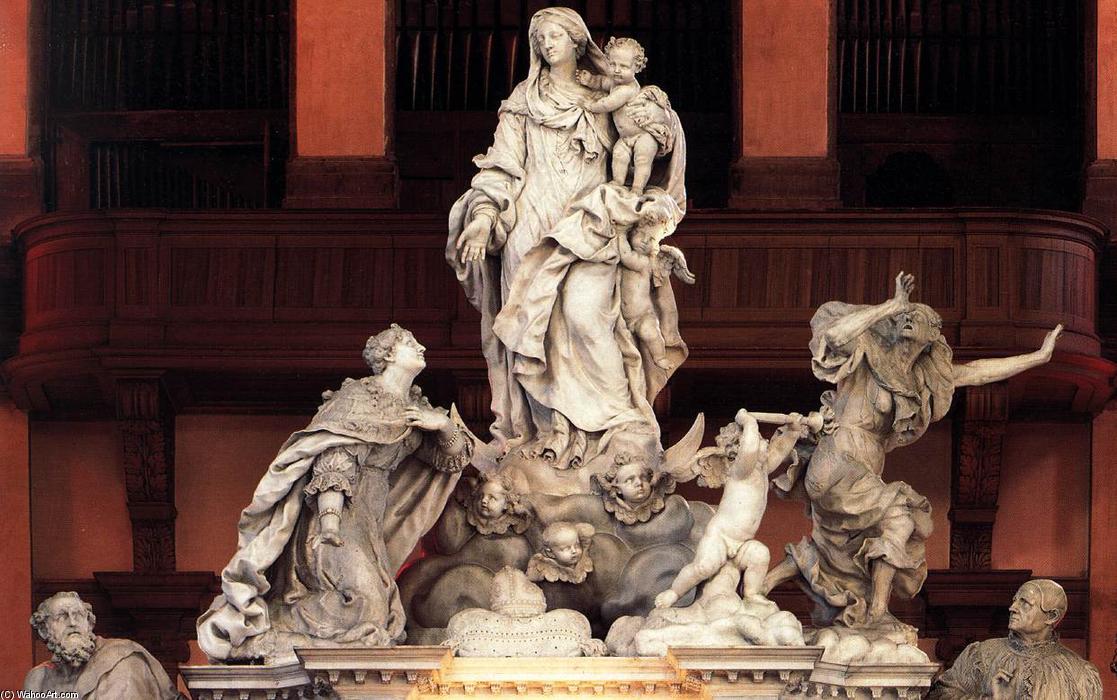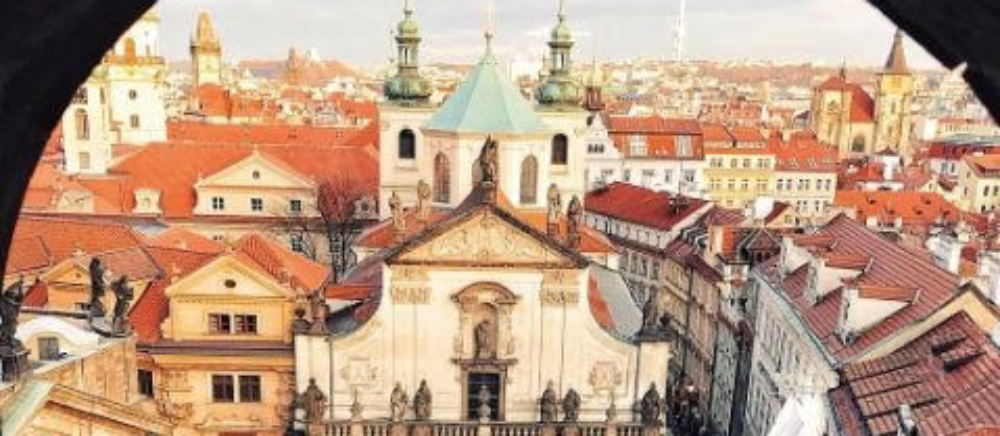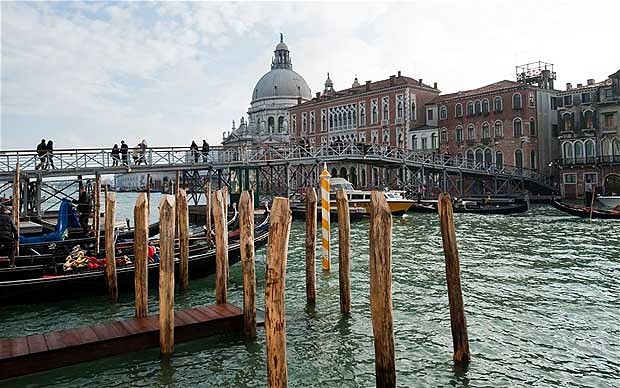
The altarpiece in Our Lady of Deliverance in Venice; note the angel on the right driving away Lady Plague with a torch.
Each year on November 21, the feast of the Entrance of the Mother of God into the Temple, a bridge is built across the water in Venice to allow a procession of the city council and the citizens of the city to Our Lady of Deliverance in thanksgiving for the end of the plague.
Beginning in the summer of 1630, a wave of the plague assaulted Venice, killing nearly a third of the population by 1631. In the city, 46,000 people died whilst in the lagoons the number was far higher, some 94,000. As a votive offering for the city’s deliverance from the pestilence, the Republic of Venice vowed to build and dedicate a church to Our Lady of Health (or of Deliverance, Italian: Salute). It was also decided that the Senate would visit the church each year on November 21 the Feast of the Presentation of the Virgin, also known as the Festa della Madonna della Salut. The city’s officials still parade from San Marco to the Salute for a service in gratitude for deliverance from the plague. This involves crossing the Grand Canal on a specially constructed pontoon bridge and is still a major event in Venice.
There are several such “plague churches” in Venice, each built to celebrate the end of one outbreak of plague or another. The plague was one of the most fearsome diseases anyone could face (until the development of modern antibiotics); an outbreak of the plague in a town was probably the most terrible thing the inhabitants could face, except war. Plague was fought with prayer and fasting, fire (burning the houses and corpses of the sick), and efforts to avoid the poisonous fumes or “miasmas” that were thought to spread the disease. (Sometimes poisoned water was thought to spread the disease as well.)
Plague, as all illnesses, was seen as a disruption of the balance of the four humors of the human body. Doctors sought to heal a patient by restoring the balance of the humors, often by “bleeding” a patient to remove the excessive humors; folk healers used herbs and plants to heal patients and the modern heirs of these folk healers are the pharmacists who provide medicine at a local pharmacy. “Pharmacology” was the Greek word for witchcraft because if a person knew how to use herbs and plants to heal, the person was assumed to know how to use these same herbs and plants to kill. Many people accused of witchcraft might still be put on trial today — but as poisoners, not witches.

